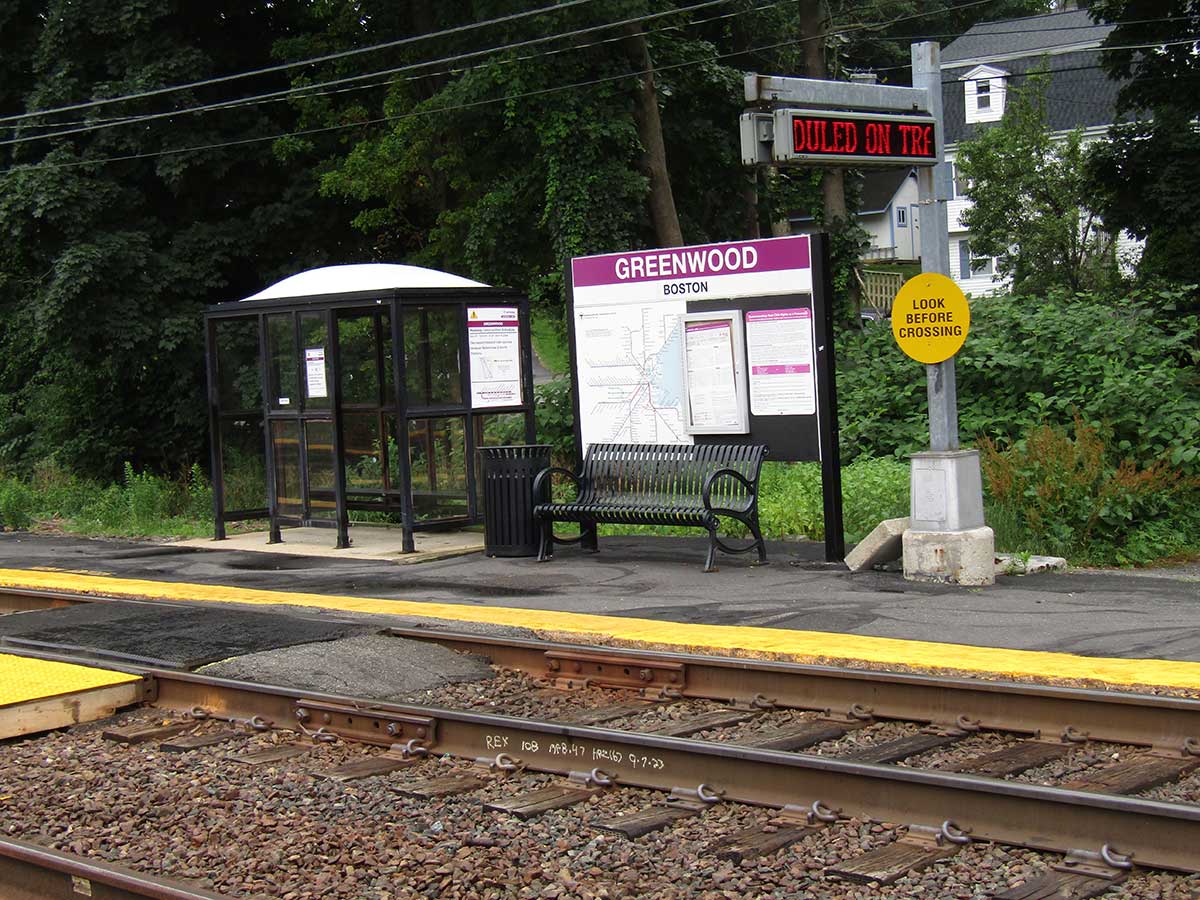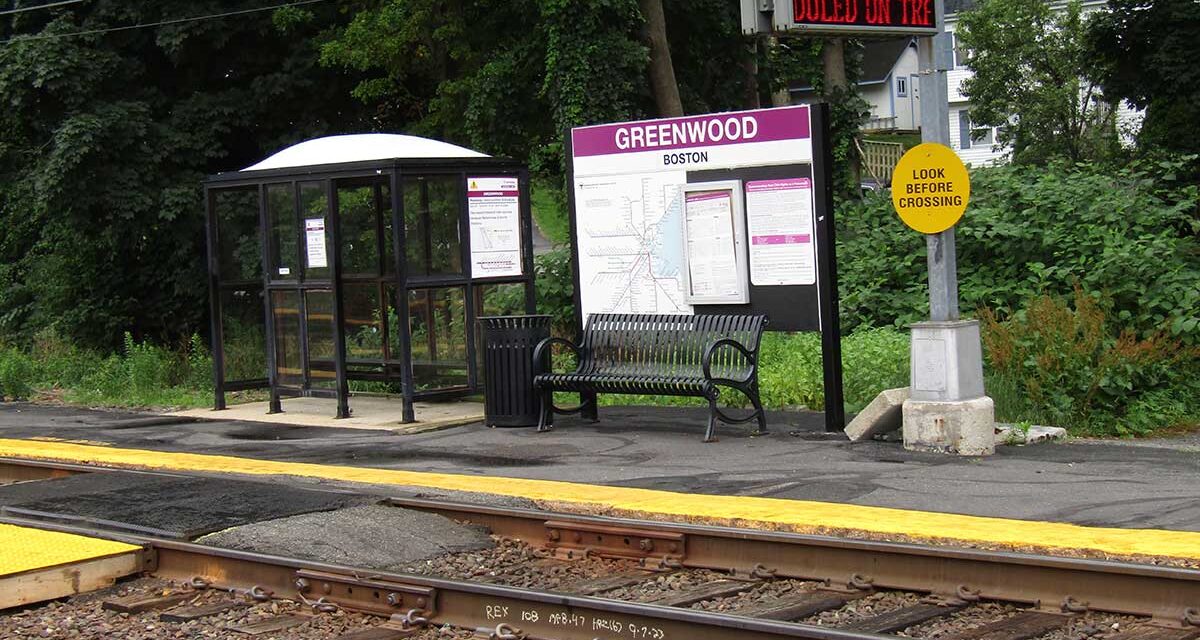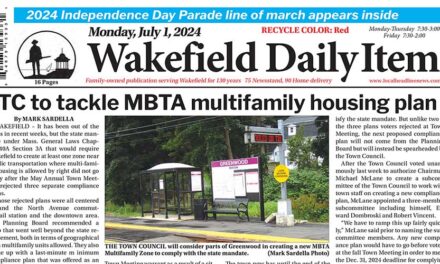
THE TOWN COUNCIL will consider parts of Greenwood in creating a new MBTA Multifamily Zone to comply with the state mandate. (Mark Sardella Photo)
By MARK SARDELLA
WAKEFIELD – It has been out of the news in recent weeks, but the state mandate under Mass. General Laws Chapter 40A Section 3A that would require Wakefield to create at least one zone near public transportation where multi-family housing is allowed by right did not go away after the May Annual Town Meeting rejected three separate compliance plans.
Those rejected plans were all centered around the North Avenue commuter rail station and the downtown area. The Planning Board recommended a map that went well beyond the state requirement, both in terms of geographical area multifamily units allowed. They also came up with a last-minute m inimum compliance plan that was offered as an alternative at Town Meeting. A different minimum compliance option was on the Town Meeting warrant as a result of a citizens’ petition.
The town now has until the end of the year to come up with another plan to satisfy the state mandate. But unlike two of the three plans voters rejected at Town Meeting, the next proposed compliance plan will not come from the Planning Board but will instead be spearheaded by the Town Council.
After the Town Council voted unanimously last week to authorize Chairman Michael McLane to create a subcommittee of the Town Council to work with town staff on creating a new compliance plan, McLane appointed a three-member subcommittee including himself, Edward Dombroski and Robert Vincent.
“We have to ramp this up fairly quickly,” McLane said prior to naming the subcommittee members. Any new compliance plan would have to go before voters at the fall Town Meeting in order to meet the Dec. 31, 2024 deadline for complying with the state mandate.
McLane said that he did not anticipate that the subcommittee would recommend going the route of Milton, which has refused to comply with the state mandate, but acknowledged that rejection of the mandate is a “viable position” to hold.
He also said that he wanted more clarity on exactly how much grant money the town would lose if it did not come up with a plan satisfactory to Town Meeting voters by the end of the year. Loss of grant funds is one of the “sticks” that the state has been using to push communities toward compliance.
Amounts ranging from $3-5 million over a three to five-year period have been mentioned, but it was noted that those numbers could vary depending on what grants are available in any given year.
McLane said that his preferred plan would involve some, and possibly all, of the areas that were not considered last time. He noted that the Planning Board had indicated that Foundry Street could not be part of the district. But, he added, the town’s Economic Development Coordinator Erin Kokinda had told him that part of Foundry Street could accommodate up to 400 units in larger buildings.
He also noted that including parts of Greenwood, which also has proximity to commuter rail stations, was not considered last time.
McLane said that he would be looking for a minimum compliance district including multiple locations, some in Greenwood, that would also include mixed-use. He said that he would like to see an entirely different plan that is not concentrated in residential neighborhoods.
McLane said that he hopes the new subcommittee can come up with such a plan that will be able to garner public support.
The fact that the original, expanded compliance plan developed by the Planning Board did not enjoy public support was evident during public hearings and other forums in the months leading up to Town Meeting. Most residents who spoke at those meetings told the Planning board that they wanted a minimum compliance model and did not support the board’s expanded plan. In apparent frustration with the entire process, Town Meeting voters rejected all compliance plans last May.





